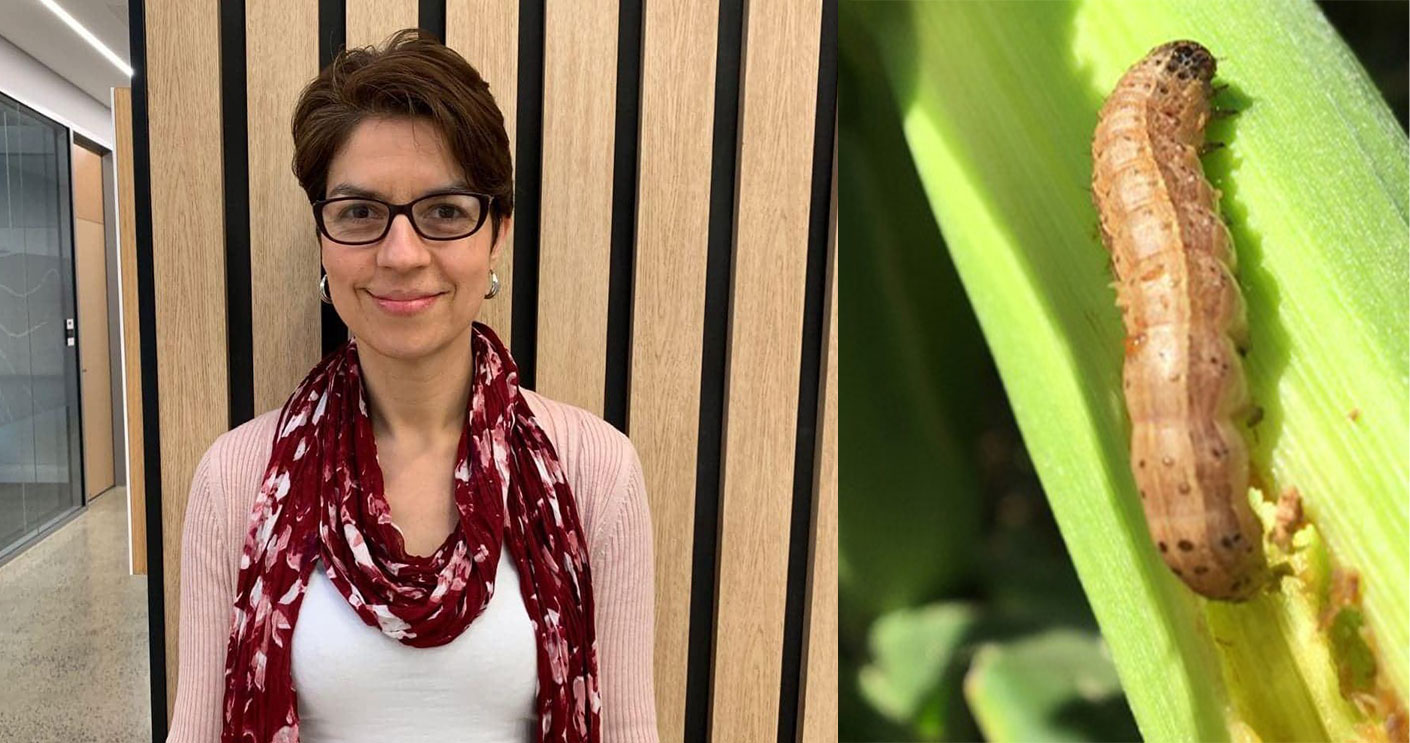Dr Vivian Mendez Alvarez leads a project to protect crops against the fall armyworm moth. The caterpillar pictured above was photographed by Dr Helen Spafford.
A $1.05 million grant from the Grains Research and Development Corporation (GRDC) was recently awarded to a project led by Dr Vivian Mendez Alvarez from Macquarie’s Applied BioSciences. The project aims to defend critical food crops against the fall armyworm moth.
The moth, which originated in South America, is now one of the world’s most serious invasive agricultural pests. In 2020, it arrived in Australia and has decimated production of critical crops, including grains, maize and corn, spreading through all but the most southern production regions. Australian growers desperately need effective and sustainable approaches to control the moth.
To develop more effective tools to monitor the presence and numbers of fall armyworm insects, Macquarie researchers have joined forces with CSIRO, Cervantes Agritech, the New Zealand Institute for Plant and Food Research and governments in New South Wales, Queensland, Northern Territory and Western Australia.
The project ‘Effective fall armyworm pheromone blends for improved monitoring and population estimation in Australia’ will synthesise the complex pheromone blends that female moths use to attract mates, luring moths into traps to estimate the numbers of fall armyworm moths in an area. The data from trapping networks across Australia will be used to develop models that predict the timing and extent of seasonal pest abundance.
This work will enable insecticides to be targeted to the places and times they are most needed, reducing the amount of insecticide used to control the moth and minimising the environmental impacts of food production.
The project will also assess the potential use of pheromone lures to reduce the reproduction of pest populations by mass trapping to eliminate a large proportion of males and by mating disruption, whereby large amounts of artificial pheromones prevent males and females from finding each other. If effective, these approaches can greatly reduce reliance on insecticide applications.
The project was initially funded with $5.43 million from Horticulture Innovation Australia Limited to target regions of horticultural production. The new funding from GRDC will allow the team to expand operations to target Australia’s most affected grain production regions.


 Back to homepage
Back to homepage